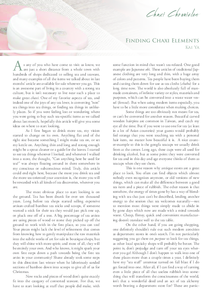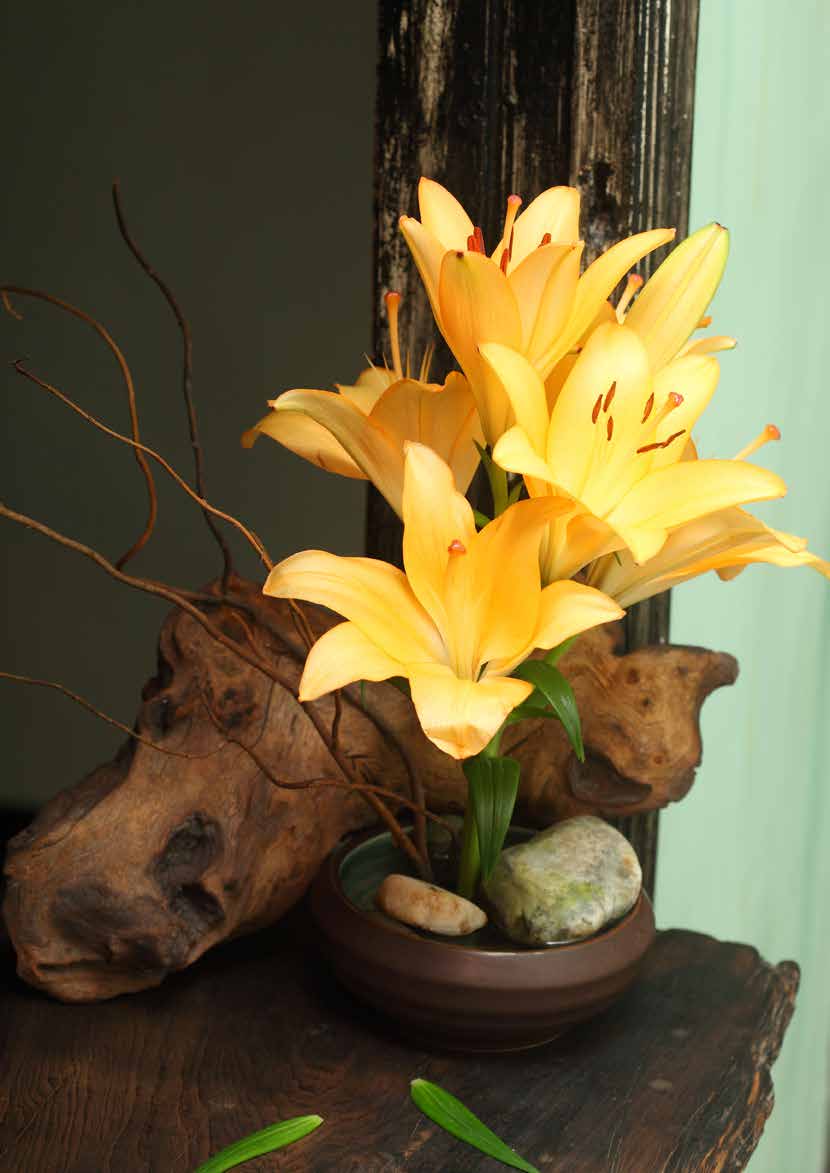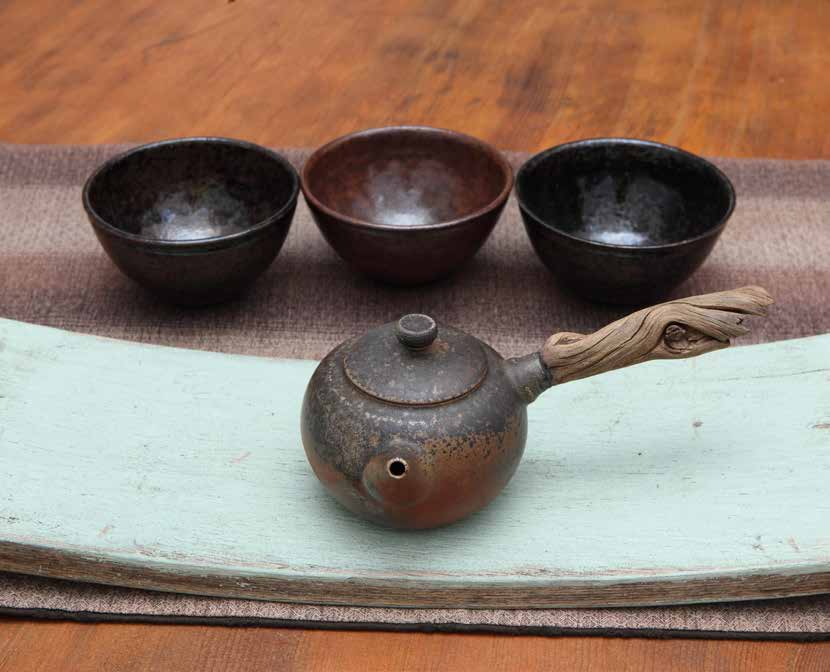
 |
|

As any of you who have come to visit us know, we are just a short distance from a whole town with hundreds of shops dedicated to selling tea and teaware, and many examples of all the items we talked about in last months' article are available for sale wherever you go. This is an awesome part of living in a country with a strong tea culture, but it isn't necessary to live near such a place to make great chaxi. One of my favorite aspects of tea, and indeed one of the joys of any tea lover, is converting "non" tea things into tea things, or finding tea things in unlikely places. So if you were feeling lost or wondering where you were going to buy such tea-specific items as we talked about last month, hopefully this article will give you some ideas on where to start looking.
As I first began to drink more tea, my vision started to change on its own. Anything flat and of the right size became something I might make tea on, or set my kettle on. Anything thin and long and strong enough might be a spout cleaner or a guide for the leaves. I started to see tea things wherever I looked, and whenever I walked into a store, the thought, "Can anything here be used for tea?" was always floating around in there somewhere in my conscious or subconscious mind. Truly, this article could end right here, because the more you drink tea and the more tea-oriented your attention is, the more you will be rewarded with all kinds of tea discoveries, wherever you are.
The most obvious place to start looking is on the ground. Tea has been drunk for over ten thousand years. Long before tea shops started selling expensive artisan-crafted bamboo tea sticks and scoops, if someone wanted a stick for their tea they would just pick one up, or pluck one off of a tree. A big percentage of tea artists are using pieces of wood or stone they picked up off the ground to work with in the first place, so you can too! Your pieces might lack the level of refinement that comes from knowing how to gently manipulate the raw materials into the subtle works of art for sale in boutique shops, but they will shine with more spirit; and most of all, they will be entirely your own. And who knows, it might spark your own first steps down a path towards being the first tea artist in your community! Shane already took some steps in this direction last winter when he laboriously sanded sections of bamboo down into scoops to give all of us for Christmas.
Now rocks and pieces of wood don't quite exactly fit into the category of converted teaware. For that, we have to start looking at stuff that people did make, with some function in mind that wasn't tea-related. One good example are Japanese obi. These articles of traditional Japanese clothing are very long and thin, with a huge array of colors and patterns. Tea people have been buying them and cutting them down for use as tea cloths (chabu) for a long time now. The world is also absolutely full of manmade containers, of infinite variety or styles, materials and purposes, which can be converted into a waste water vessel (kensui). But when using modern items especially, you have to be a little more considerate when making choices. Some things are too obviously not meant for tea, or can't be converted for another reason. Beautiful carved wooden hairpins are common in Taiwan, and catch my eye all the time. But if you were to use one for tea (at least in a lot of Asian countries) your guests would probably feel strange that you were touching tea with a personal hair item, no matter how beautiful it is. A nice counter-example to this is the gongfu teacups we usually drink from at the center. Long ago, these cups were all used for drinking alcohol, but at some point they were converted for tea and in this day and age everyone thinks of them as teacups when they see them.

This is one reason why antique stores are a great place to look. You often can find objects which almost nobody even recognizes anymore, or old versions of new things, which can make all the difference between a good tea item and a piece of rubbish. The other reason is that somehow, the energy of times gone by has a way of blending with tea that just can't be described, lending another energy to the session that tea welcomes naturally - not to mention most things were simply made to abide in by gone days which now are made with a mind towards waste. Cheap, flimsy, quick and convenient manufacturing doesn't translate well to the tea table.
On the other hand, if you are going shopping, one definitely shouldn't rule out such modern atrocities as department stores in one's search. I'm not particulary suggesting you go there on purpose to look for tea things, as other local specialty shops will probably be better. The point is, don't prejudge and turn off your tea eyes wherever you go! Although I don't happen to walk into one of these places more than a couple times a year, I definitely have my "tea stuff" antennae turned on full blast if I do get forced into one. After all, if I can find a way of turning even a little piece of all that useless rubbish into something that will transform the consciousness of the world, isn't that a wonderful deed and an act of tea alchemy worth braving a department store for? These are particularly good candidates for tea cloths. You aren't likely to find one lying on the ground with your sticks and stones, after all. Don't forget, in many cases the manufacturer just didn't realize they were making a tea item!
Chabu are a good example. There probably isn't a shelf anywhere in your city labeled "cloths for chaxi". But, chances are there are some bamboo "placemats", or "table runners" for elegant dinner arrangements, and so on, in most any store that sells kitchen goods. Kitchen supply sections are also often useful sources of items that can be used as tea pillows, kensui, or even sealed porcelain jars for storing your tea. We have a nice tea pillow that cost only three dollars we bought at such a place, a colorful ceramic piece meant for table mints or something like that. You also might take a look in home furnishings at the floor tiles for more tea pillow options.
Lastly, I want to talk a bit about vases. Flower arrangements are of course quite optional as far as chaxi goes. Also, of all the chaxi items, a flower vase is the most universally recognizable and available. But, because flower arrangements can be such a deep, diverse and rewarding aspect of chaxi, I feel we shouldn't just leave it at that. Note again that flowers are a great item that can be found anywhere and simply placed on the table for free, whereas when we begin to use vases, we begin to refine the practice and move towards the ancient art of chabana, the Japanese word for describing a flower arrangement made for tea.

Along with this art form comes also the necessity for a wide variety of vases and dishes in which to arrange the flowers. At first it might seem like this is going to be an expensive endeavor, but it is not necessarily so. With a little creativity and an expansion of the way you look at the world and define a "vase", you can start delving into this aspect of chaxi without spending a lot of money on Japanese antiques. A good start is to look up "chabana" on Google Images and see the enormous variety of forms "vases" can take. Often a simple ceramic or even wooden bowl can be used, or a very shallow dish you might have thought was a plate might actually be your most beautiful chabana vase, you just didn't know it yet. Most garden suppliers sell metal flower spikes and other accessories that can hold tall flowers in shallow or wide vases. Again, some of my best vases are things I have found on the ground, such as rocks with holes in them or pieces of twisted wood into which stems can be fixed, creating "dry" vases. In some cases I might put the twisted wood or rock onto a dish or into a bowl also if they suit each other, so that the arrangement can get water.
Your efforts will be well worth it. No other element adds the kind of vibrancy, life and beauty to a chaxi the way a good flower arrangement does. And as we discussed last month, chaxi is all about honoring the transient unique beauty of the session, and flowers are the perfect representatives of the spirit of Ichigo Ichie in Nature.
All you need to do is start looking around wherever you go with tea eyes open. Ask yourself, "Can I use this for tea?" and look for things like these:
This is quite a formalized list, and although you might at first actually have such thoughts running through your head, the fact is that over time it just becomes a reflex. As I said before, this is one of the joys of a tea lover, and if you love tea, you will notice more and more often this exclamation: "Hey, I can make tea with that!" It's much more about your orientation than anything else, and I think it even ties into the old saying, "As the man seeks the Leaf, the Leaf seeks the man." The more you steep your spirit in Tea, the less you need to intentionally seek Tea out, and the more you find Her finding Her way to you. Similarly, I think you will be surprised to find that in fact you do live in a place that is full of things for tea after all, just as soon as you start looking...

